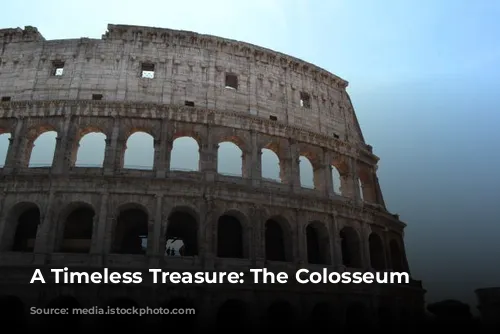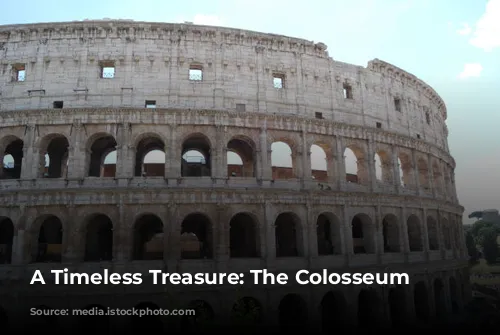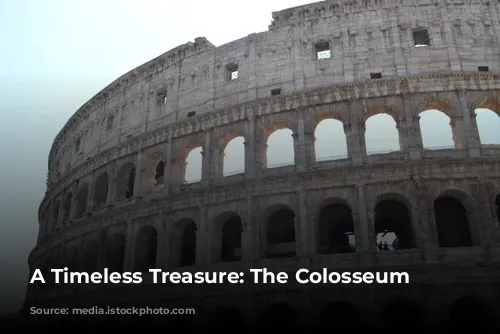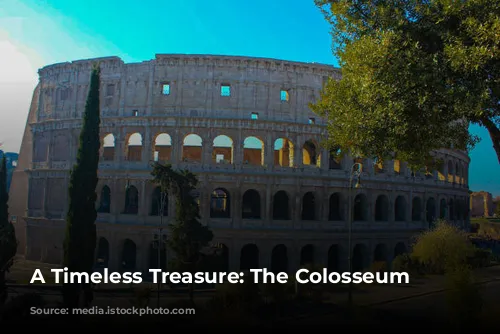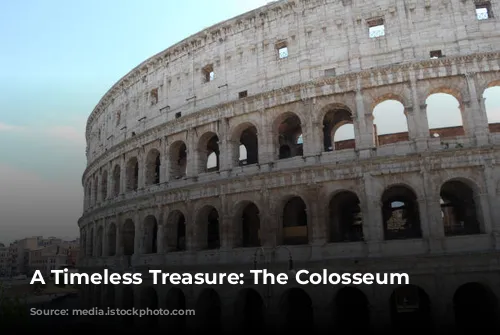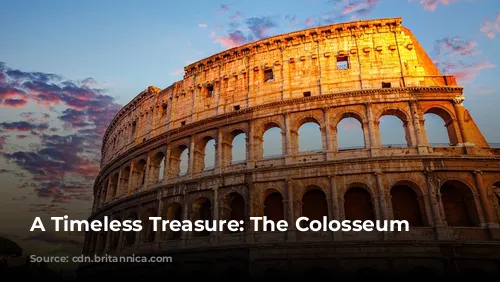The Colosseum stands as a magnificent testament to the architectural and engineering brilliance of ancient Rome. This majestic structure, one of the few relatively unscathed remnants of the Roman Empire, serves as a powerful reminder of a bygone era. Beyond its historical significance, the Colosseum plays a vital role in Italy’s economy, generating significant tourism revenue. In 2018 alone, the Colosseum, Roman Forum, and Palatine Hill collectively drew in over $63.3 million (€53.8 million), making it Italy’s top tourist attraction.
This section establishes the Colosseum’s historical importance, its connection to the Roman Empire, and its economic impact as a tourist attraction.
From Glory to Neglect and Restoration
The Colosseum’s history is marked by both grandeur and decline. After the fall of the Western Roman Empire, the once-grand arena fell into disrepair. In the 12th century, the Frangipane and Annibaldi families, powerful Roman families, appropriated the Colosseum as a fortress. This marked a dramatic shift in its purpose, from a symbol of Roman power to a strategic stronghold. In the late 15th century, Pope Alexander VI permitted the Colosseum to be stripped of its materials, essentially treating it as a quarry. This devastating act of neglect left the Colosseum in a state of ruin, its former glory seemingly lost. However, hope for its restoration emerged in the 1990s, with state-funded efforts aiming to revitalize this iconic structure.
This section chronicles the Colosseum’s decline after the Roman Empire, highlighting its transformation into a fortress and later its use as a source of building materials. It ends with a hopeful note, emphasizing the restoration efforts that began in the 1990s.
A Monument to Entertainment and Power
The Colosseum was built during a period of reconstruction and rejuvenation in Rome, following the tumultuous year of the four emperors in 69 CE. Emperor Vespasian, who commissioned the Colosseum, envisioned it as a grand entertainment venue, meant to captivate the Roman people. The arena was designed to host spectacular displays of gladiatorial combat, thrilling animal hunts, and even mock naval battles, all of which showcased the Roman Empire’s might and entertained the masses.
This section delves into the Colosseum’s purpose, focusing on its role as a platform for entertainment and a display of Roman power.
A Legacy of Roman Ingenuity
Construction of the Colosseum commenced under Vespasian between 70 and 72 CE. His son and successor, Titus, dedicated the completed structure in 80 CE. Emperor Domitian later added the Colosseum’s fourth story in 82 CE. The arena was financed by the spoils of war, specifically from Titus’s conquest of Jerusalem in 70 CE, and built by enslaved Jews from Judea. The Colosseum’s construction is a testament to Roman architectural prowess, a marvel of engineering for its time.
This section provides specific details regarding the construction of the Colosseum, highlighting the roles of Vespasian, Titus, and Domitian. It also emphasizes the source of funding and the workforce used for its construction.
A Colossal Structure with a Colossal History
The Colosseum, also known as the Flavian Amphitheater, is an enormous elliptical structure built with stone, concrete, and tuff. Its four stories reach a towering height, and its immense scale is awe-inspiring. Measuring 620 by 513 feet (189 by 156 meters), it could accommodate up to 50,000 spectators. This monumental arena was famously used for gladiatorial combat, a popular form of entertainment in ancient Rome.
This section describes the physical characteristics of the Colosseum, including its size, materials, and its renowned use for gladiatorial combat.

A Symbol of Power and Change
The Colosseum’s location, just east of the Palatine Hill, was strategically chosen. It was built on the site of Nero’s Golden House, a lavish palace complex that had been destroyed by fire. The artificial lake that was the centerpiece of this palace was drained to make way for the Colosseum. This choice was both symbolic and practical. Vespasian, who had risen to power through more humble beginnings, chose to replace the tyrannical emperor’s private lake with a public amphitheater that would serve the Roman people. This act symbolized a shift from autocratic rule to a more democratic and public-oriented approach.
This section analyzes the Colosseum’s location and its symbolic significance, linking it to the replacement of Nero’s lavish palace with a public arena. It connects the Colosseum’s construction with a shift towards a more democratic and public-oriented society.

A Marvel of Engineering and Design
The Colosseum’s construction is remarkable for its innovative engineering. Unlike earlier amphitheaters, which relied on hillsides for support, the Colosseum stands as a freestanding structure, a feat of engineering achieved through a complex system of barrel and groin vaults. The Colosseum’s distinctive facade features three tiers of arcades, each adorned with engaged columns in the Doric, Ionic, and Corinthian orders. This elegant arrangement of columns later influenced Renaissance architecture, marking the Colosseum’s enduring influence on architectural design.
This section focuses on the Colosseum’s innovative engineering and its architectural design, highlighting its distinctive features and its lasting influence.
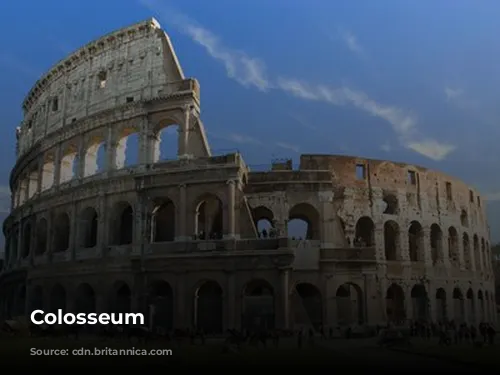
A Venue for Spectacle and Entertainment
The Colosseum was meticulously designed to accommodate a large audience, with seating for 50,000 spectators. To protect them from the scorching Roman sun, a massive retractable awning, known as a velarium, was used. Hundreds of Roman sailors were needed to manipulate the rigging that extended and retracted this awning. The Colosseum hosted a wide range of spectacles, including gladiatorial combat, contests between men and animals, and even elaborate mock naval battles. The Colosseum was a place of thrilling entertainment, where Romans witnessed feats of strength, skill, and courage.
This section highlights the Colosseum’s features designed for spectator comfort and describes the variety of spectacles it hosted, emphasizing its role as a venue for entertainment and spectacle.
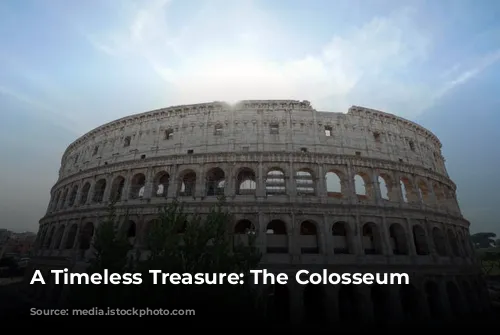
From Glory to Restoration
Despite its grand history, the Colosseum faced destruction over time. It was damaged by lightning, earthquakes, and vandalism. Over a thousand years of neglect saw the Colosseum stripped of its marble seats and decorative materials, leading to its decline. The Colosseum was repurposed, first as a church and later as a fortress by the Frangipane and Annibaldi families. However, preservation efforts began in the 19th century, led by Pius VIII, and gained momentum in the 1990s with a dedicated restoration project.
This section details the Colosseum’s decline and its restoration efforts, emphasizing the damage it suffered and the ongoing efforts to preserve this iconic structure.
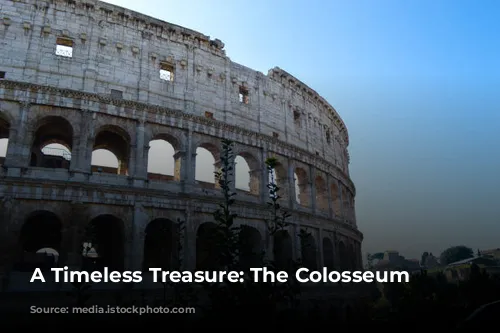
A Timeless Symbol
Today, the Colosseum remains one of Rome’s most popular tourist attractions, drawing in millions of visitors each year. Changing exhibitions relating to ancient Roman culture are regularly held within its walls, keeping the spirit of this magnificent structure alive. The Colosseum stands as a testament to the enduring power of Roman architecture and a reminder of a civilization that continues to inspire and fascinate. It is a symbol of Rome’s rich history, its architectural achievements, and its lasting legacy.
This section emphasizes the Colosseum’s ongoing relevance as a tourist attraction and a symbol of Roman civilization. It summarizes the Colosseum’s historical importance and its lasting legacy.
